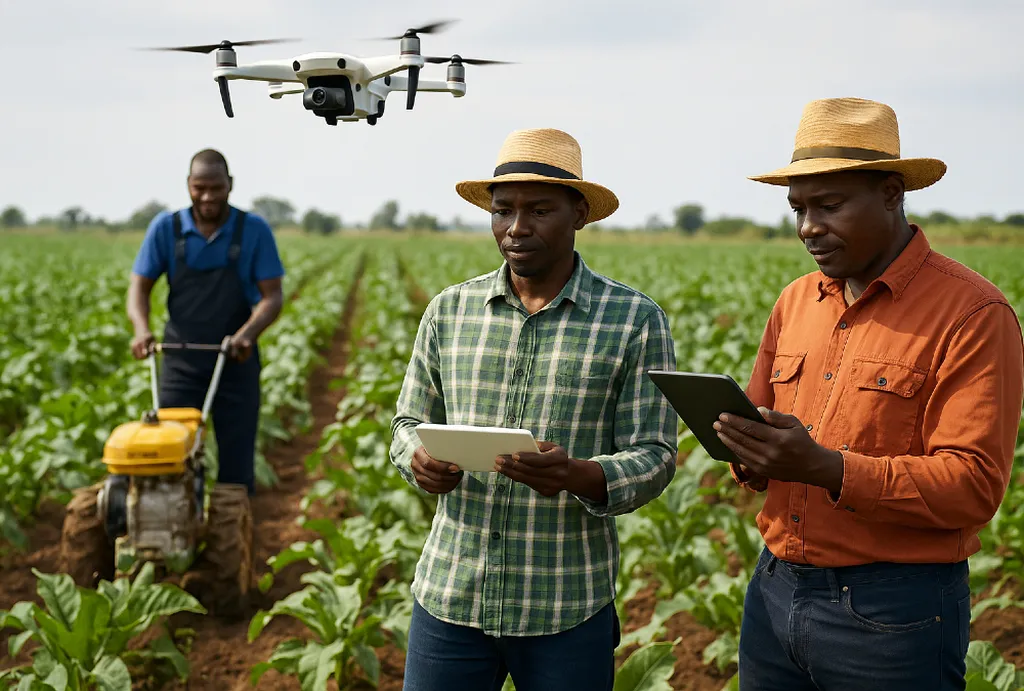In the heart of Africa, a quiet revolution is taking root, one that promises to transform the continent’s agricultural landscape and bolster its economic resilience. At the forefront of this change is the integration of mechatronics into agriculture, a field known as Agritronics, which is gaining traction as a powerful tool for sustainable growth. This innovative approach combines mechanical systems, electronics, and intelligent control to enhance productivity, optimize resource use, and promote environmental sustainability.
Thomas Adedayo Ayorinde, a researcher from the Department of Mechanical and Mechatronics Engineering at Tshwane University of Technology in Pretoria, South Africa, is one of the key voices advocating for this technological shift. His recent article, published in the *Journal of Emerging Technologies and Innovations in Agricultural Management* (ITEGAM-JETIA), explores how mechatronics can be leveraged to modernize Africa’s agricultural sector.
Ayorinde’s work highlights the broad applications of mechatronics across the agricultural value chain. From GPS-assisted land preparation to precision planting and automated post-harvest processing, these technologies are designed to improve efficiency and reduce waste. “Mechatronics offers a scalable solution that can be adapted to various agricultural settings, from smallholder farms to large commercial operations,” Ayorinde explains. “This adaptability is crucial for Africa, where agricultural practices vary widely across different regions.”
One of the key enablers of this technological integration is the implementation of Ag-IoT (Agricultural Internet of Things) technology platforms such as Arduino Uno, ESP32, and Raspberry Pi. These platforms facilitate the introduction of smart technologies that can monitor soil conditions, optimize irrigation, and even predict weather patterns, all of which contribute to more sustainable and climate-resilient agricultural practices.
The potential commercial impacts of these advancements are significant, particularly for the energy sector. As Africa seeks to secure its food supply and minimize post-harvest losses, the integration of mechatronics can lead to the development of new value chains and business models. For instance, the use of automated systems in post-harvest processing can reduce energy consumption and improve the efficiency of food storage and distribution, ultimately lowering costs and increasing profitability.
However, the successful adoption of these technologies requires a collaborative effort. Ayorinde emphasizes the need for targeted investments in infrastructure, technical education, and innovation ecosystems. “Governments, educational institutions, private sector stakeholders, and rural communities must work together to create a supportive environment for the adoption of mechatronics,” he notes. “This includes developing policies that encourage innovation and providing the necessary resources for training and implementation.”
As Africa continues to grapple with the challenges of food security and economic development, the integration of mechatronics into agriculture offers a promising path forward. By harnessing the power of smart technologies, the continent can build a more resilient and inclusive agricultural economy, one that is better equipped to meet the demands of a growing population and a changing climate.
The research published in ITEGAM-JETIA (Journal of Emerging Technologies and Innovations in Agricultural Management) underscores the transformative potential of mechatronics in agriculture. As the field continues to evolve, it is clear that this technological revolution will play a crucial role in shaping the future of Africa’s agricultural sector and its broader economic landscape.

